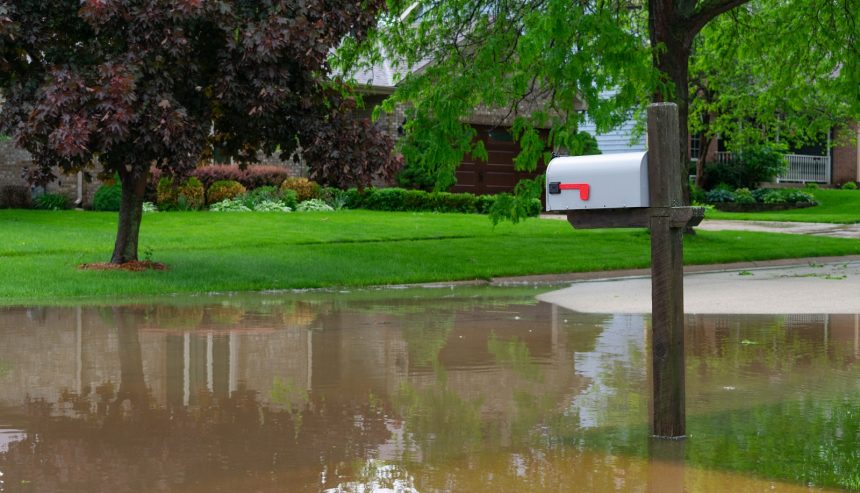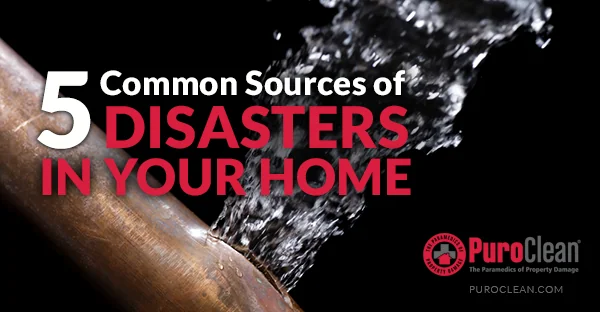Table of Contents
Winter in Charlotte can be unpredictable, with temperatures fluctuating and heavy rainfall becoming more common as the season progresses. While snow and ice are typically not a major concern in the area, flooding risk still remains a significant issue during the colder months. Whether it’s from heavy rain or rapidly melting snow, winter brings its own set of challenges for homeowners, and recognizing the signs of potential flooding early can make all the difference.
In this blog post, we’ll discuss the key signs to watch for during winter, the importance of flood prevention, and how to stay prepared for any water-related emergency in Charlotte. With proper preparation and a little knowledge, you can minimize the impact of winter flooding on your property.
1. Signs of Potential Flooding in Your Neighborhood
During winter, certain environmental factors can increase the likelihood of flooding. Understanding the early signs is essential for homeowners to act quickly. Here are the key indicators to look out for in your Charlotte neighborhood:
A. Rapid Snowmelt
While snow is relatively uncommon in Charlotte, when it does happen, it can lead to significant flooding risks. Rapid snowmelt can overwhelm local drainage systems, particularly in areas like South End and Uptown, where urban development often leads to less efficient water runoff. As temperatures rise above freezing, snow and ice melt quickly, resulting in excess water that has nowhere to go but into your basement or crawl space.
B. Heavy or Prolonged Rainfall
Charlotte typically experiences rainfall during the winter months, but extended periods of rain can lead to water buildup around your property. If your home is located near low-lying areas or a river, such as those near McAlpine Creek, these areas may be at higher risk for flooding, especially during heavy rainfall events. Always pay attention to weather forecasts and prepare for potential rainfall.
C. Clogged or Damaged Gutters
Clogged gutters are one of the most common causes of water damage during winter, particularly in neighborhoods like Ballantyne and East Charlotte. Fallen leaves and debris can block the gutters, causing rainwater to pool around your foundation. Over time, this pooled water can lead to significant flooding inside your home, damaging walls, floors, and personal belongings.
D. Poor Drainage Around Your Property
In many older homes throughout Charlotte, the drainage systems may not be as effective as newer homes. Watch for signs that water is pooling around the foundation of your home. If your yard slopes towards the house instead of away from it, or if you notice puddles near your basement windows, these could be early indicators that water is likely to seep inside.
2. Preventative Measures to Reduce Flooding Risk
Now that you know what to look for, let’s focus on flood prevention steps you can take to protect your property. Acting early can save you from costly water damage and the need for emergency services later. Here are some key strategies to minimize the flooding risk during winter:
A. Inspect and Clean Gutters Regularly
As simple as it may seem, cleaning your gutters is one of the most effective ways to prevent flooding. Ensure that gutters and downspouts are free of leaves and debris. Consider installing gutter guards to prevent clogging, especially in areas like SouthPark where trees are common. Cleaning your gutters every season, including before winter, is a simple yet vital step in flood prevention.
B. Check and Improve Grading Around Your Home
Proper grading is crucial for redirecting water away from your foundation. Ensure that your lawn slopes slightly away from your house to guide rainwater and melting snow away from your home. If you notice areas where water pools around the foundation, it might be worth consulting a professional landscaper to improve drainage.
C. Install a Sump Pump
If you live in a home with a basement or crawl space, installing a sump pump can be an effective way to prevent water from entering during the winter months. Sump pumps are designed to collect water and pump it away from your foundation, preventing flooding in your lower-level spaces.
D. Seal Cracks and Gaps in Your Foundation
During winter, water can easily enter your home through cracks in your foundation. Be sure to inspect your foundation for any gaps or cracks and seal them to prevent moisture infiltration. This is a crucial step in protecting your home from both flooding and mold growth.
3. What to Do If Flooding Occurs: Emergency Services
Despite your best efforts at flood prevention, sometimes the unexpected can happen, and flooding can occur. If you experience flooding in your home during the winter, it’s important to act quickly. Here are some immediate steps to follow:
A. Turn Off Utilities
If floodwaters are rising, immediately turn off electricity, gas, and water supplies to prevent electrical hazards and further water damage.
B. Evacuate if Necessary
If the floodwaters are rising rapidly or threatening your safety, evacuate your home. Have an emergency plan in place that includes knowing the nearest evacuation routes and safe areas to go.
C. Contact Emergency Services
In the event of serious flooding, contact emergency services. PuroClean of Charlotte offers emergency services 24/7 to assist with flood damage restoration. Our team is equipped to handle everything from water extraction to mold remediation, ensuring that your home is returned to its original condition after a flooding event.
4. The Importance of Flood Insurance
If your property is at high risk of flooding during winter, consider purchasing flood insurance. While standard homeowner’s insurance doesn’t typically cover flood damage, flood insurance can protect your home from the unexpected costs of water damage. Contact your insurance provider to discuss your options and ensure that you are covered in the event of a flood.
For more information on flood insurance, you can visit FEMA’s National Flood Insurance Program (NFIP) here.
Conclusion: Be Prepared for Winter Flooding in Charlotte
Flooding during the winter months is a real concern for homeowners in Charlotte, but with the right precautions, you can reduce the risk of water damage. By being aware of the signs of potential flooding, implementing effective flood prevention measures, and knowing when to contact emergency services, you’ll be better equipped to protect your home.
If you experience flooding or significant water damage, don’t hesitate to call PuroClean of Charlotte. Our team is ready to assist with water damage restoration and mold remediation, ensuring your home is dry and safe again.
For more information about our emergency services or to schedule a consultation, contact us today! Contact PuroClean of Charlotte for flood damage restoration services




 PuroClean Water/Mold/Fire Damage Experts
PuroClean Water/Mold/Fire Damage Experts